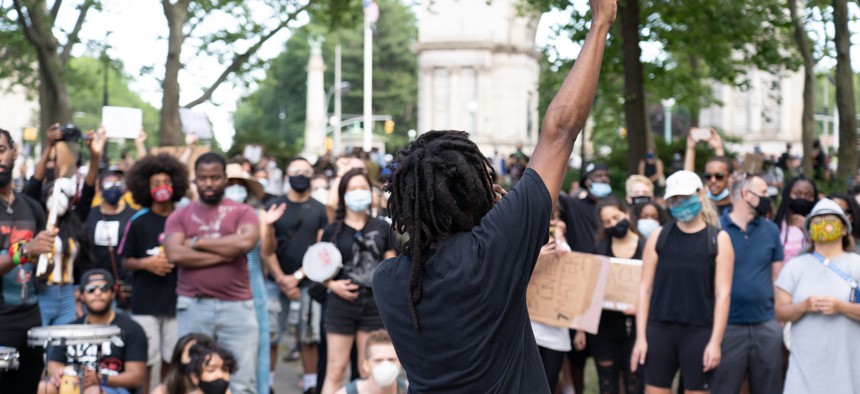What’s next for bail funds?

Man raises fist in air during protest for racial justice in New York City. Ron Adar / Shutterstock
Amid nationwide protests against police brutality and systemic racism, many supporters of such demonstrations have directed their funding toward bail funds to keep arrested protesters out of jail. Now faced with an immense influx of cash, these funds are determining what to do with those donations.
For example, the Minnesota Freedom Fund recently faced backlash amid an enormous influx of donations. The organization has received more than $30 million since protests began – an amount 300 times its annual budget. Though it managed to bail out all protesters in the area to the tune of $200,000, some donors took to social media to complain that only a fraction of the funding had been spent – despite the fact that it has such small-scale capacity. The fund plans to use the rest of the donations to build up capacity and further advocate for ending cash bail.
On the other hand, the Brooklyn Community Bail Fund has a much larger presence. With a $3 million annual budget, its flood of donations was significant but not nearly as disproportionate as that of the Minnesota Freedom Fund. More than 50,000 donors have pitched in upwards of $1.8 million to the fund since May 29.
The fund shifted its focus toward paying immigration bonds as of 2019, when it announced it would no longer pay bail to get people out of jail because bail funds have become “an escape hatch for a political system that lacked the courage to end money bail.” To honor the intent of its most recent donors, the Brooklyn Community Bail Fund won’t use those funds for immigration bonds but will instead send them to similar groups across the country or other grassroots, Black-led organizations.